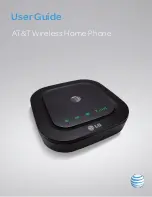
44
g Wireless router
sections
table of contents
1
2
3
4
5
7
8
9
10
6
Using the Web-based advanced User interface
1. ip address
The “iP address” is the internal iP address of the router� The default
iP address is “192�168�2�1”� To access the Web-Based Advanced User
interface, type this iP address into the address bar of your browser�
This address can be changed if needed� To change the iP address,
type in the new iP address and click “Apply Changes”� The iP address
you choose should be a non-routable iP� examples of a non-routable iP
are: 192�168�x�x (where x is anywhere between 0 and 255), and 10�x�x�x
(where x is anything between 0 and 255)�
2. subnet Mask
There is no need to change the subnet mask� This is a unique, advanced
feature of your Belkin router� it is possible to change the subnet mask
if necessary; however, do NOT make changes to the subnet mask
unless you have a specific reason to do so� The default setting is
“255�255�255�0”�
3. Dhcp server
The DHCP server function makes setting up a network very easy by
assigning iP addresses to each computer on the network automatically�
The default setting is “On”� The DHCP server can be turned OFF if
necessary; however, in order to do so you must manually set a static iP
address for each computer on your network� To turn off the DHCP server,
select “Off” and click “Apply Changes”�
4. ip pool
The range of iP addresses set aside for dynamic assignment to the
computers on your network� The default is 2–100 (99 computers)� if you
want to change this number, you can do so by entering a new starting and
ending iP address and clicking on “Apply Changes”� The DHCP server
can assign 100 iP addresses automatically� This means that you cannot
specify an iP address pool larger than 100 computers� For example,
starting at 50 means you have to end at 150 or lower so as not to exceed
the 100-client limit� The starting iP address must be lower in number than
the ending iP address�
















































